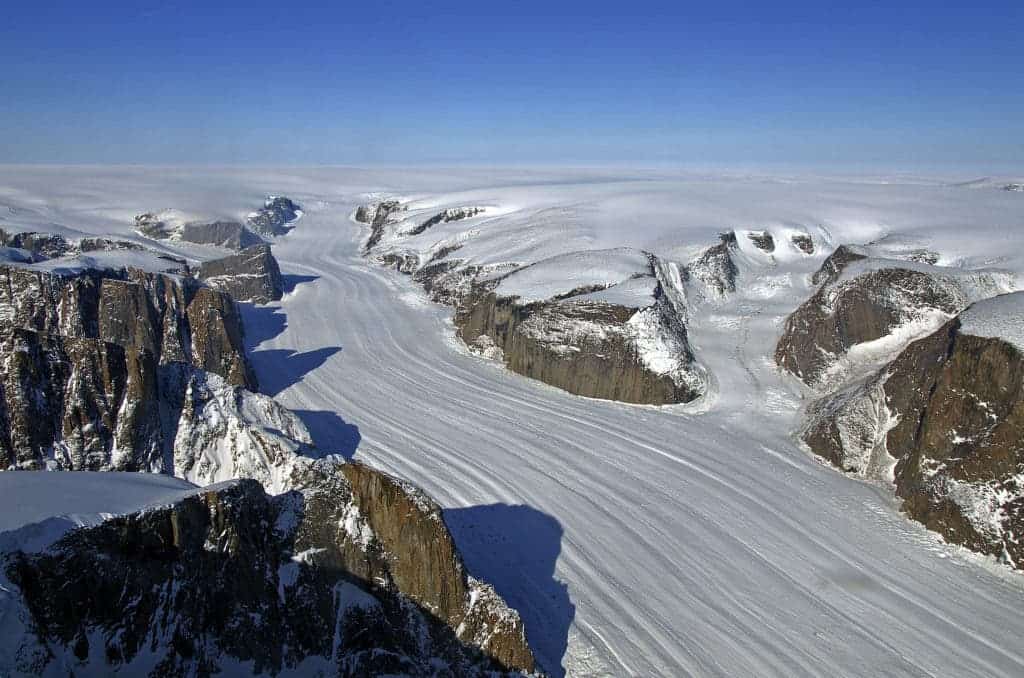Researchers fear that the darkening of Greenland will create a feedback loop with severe results.

The snowball effect — we often use it as a metaphor for something that starts off small but then builds up on itself more and more, until it becomes massive. Nature often works like that; after all, the snowball is, above all, a natural metaphor. But there’s more to snow than just rolling balls. Take albedo for example.
Albedo is a measure of how much solar energy the Earth (or any body for that matter) reflects back. The whiter and object is, the more energy it reflects. The darker it is, the more energy it absorbs. As you can imagine, snow is pretty white; it’s one of the whitest things on Earth. As snow melts, it exposes either the underlying rock or the vegetation that takes its place — either way, something darker. As a result, even more solar energy is absorbed and even more snow melts, and so on. This is what we call a feedback loop, and it’s what is happening nowadays in Greenland, leaving researchers extremely worried.
A five-year project called Black and Bloom wants to have a deeper look at that. They want to mix local data with computer models to predict how this change in albedo will contribute to rising sea levels. Greenland’s ice sheet alone contributes to 1mm a year to rising sea levels, and things may even be worse than we thought.
New data is showing that Greenland is riddled with dark-green patches of algae, bacteria, and minerals. Prof Martyn Tranter of Bristol University, who is leading the project, told the BBC:
“People are very worried about the possibility that the ice sheet might be melting faster and faster in the future. We suspect that in a warming climate these dark algae will grow over larger and larger parts of the Greenland ice sheet and it might well be that they will cause more melting and an acceleration of sea level rise. Our project is trying to understand just how much melting might occur.”
To make things even more complex, recent data has shown that most of this dark matter, once thought to be rock or soot, is actually biological. Algae is starting to assert dominance more and more, but for once, no one’s really happy to see natural plant life expand. How does the biological factor play into climate models, which tend to treat all factors as un-living? We don’t really know, but it might be worse.
In a paper recently published in Science Advances, Stefan Hofer, a PhD student at Bristol, analyzed data over 20 years and found a 15% decrease in cloud cover over Greenland in the summer months. This may be particularly significant considering the emerging algae. While temperature is certainly one of the main drivers of melting, clearer skies also contribute. But clearer skies do more than just melt ice and snow, they offer more energy to the algae, which can encourage them to grow even more. It’s basically a feedback loop on steroids. The clear weather acts on two fronts, adding an extra punch to the snowball effect researchers were already predicting.
The consequences of this effect are not yet understood. Greenland’s ice sheet is up to 3km thick and would raise sea levels by seven meters if all of it would melt into the sea. Of course, no one’s saying that will happen now or in the next decades, but until 2100, global sea levels are expected to rise by several cm, and just a few cm can wreak havoc on the world’s coasts.
Journal Reference: Stefan Hofer, Andrew J. Tedstone, Xavier Fettweis and Jonathan L. Bamber — Decreasing cloud cover drives the recent mass loss on the Greenland Ice Sheet. DOI: 10.1126/sciadv.1700584


